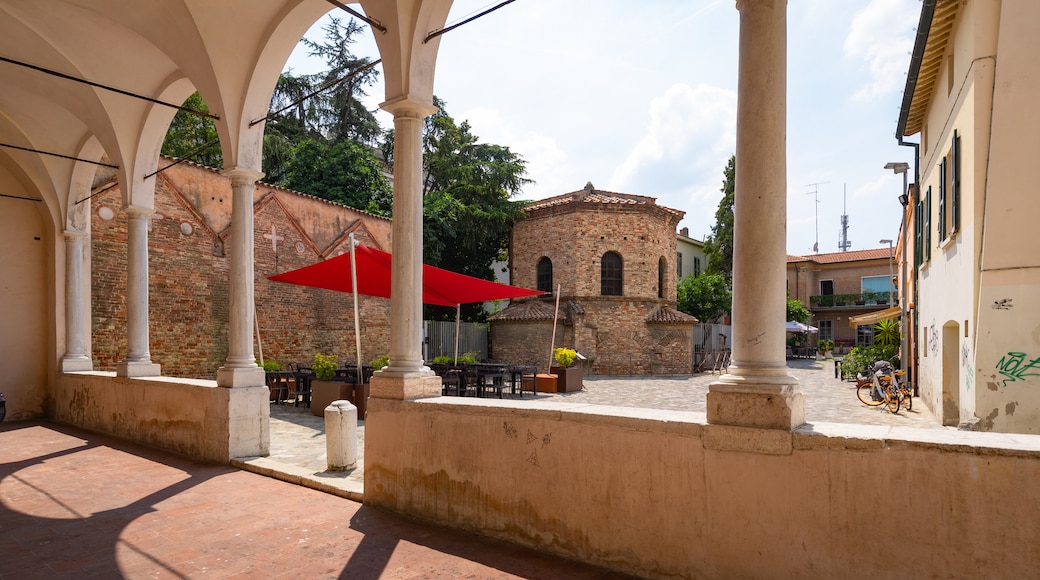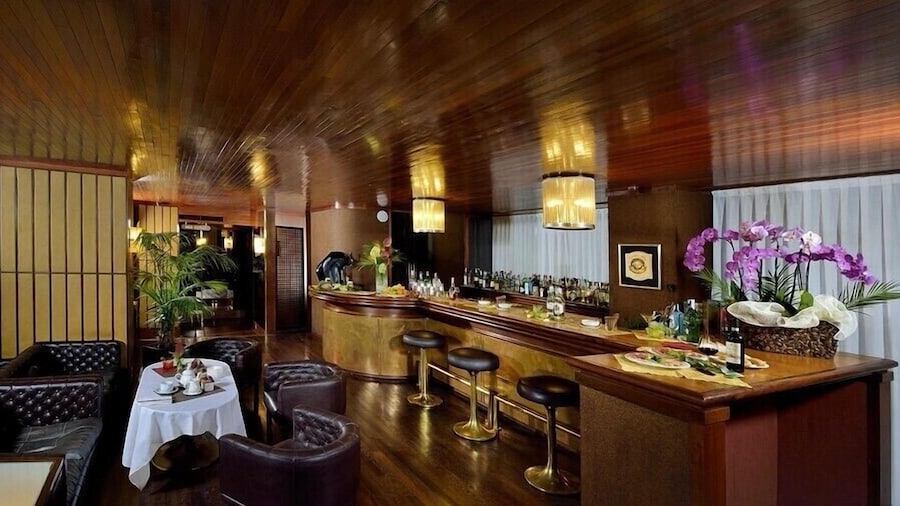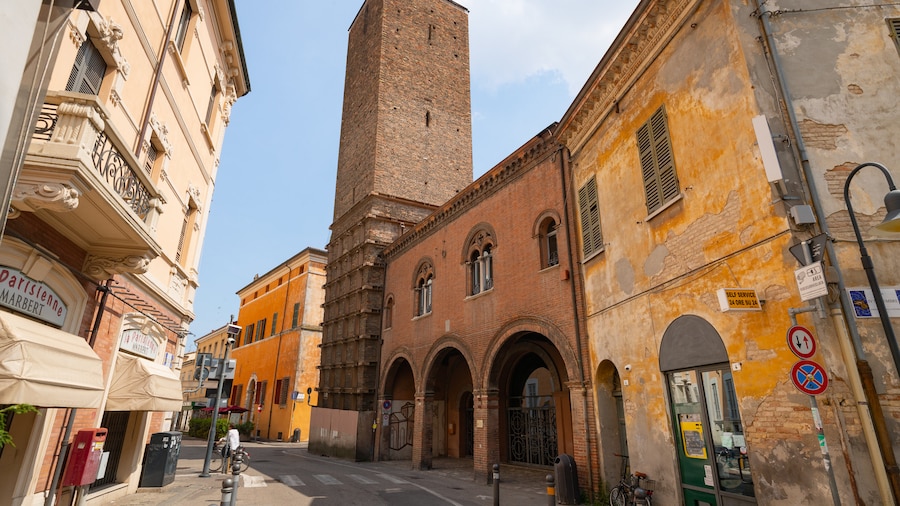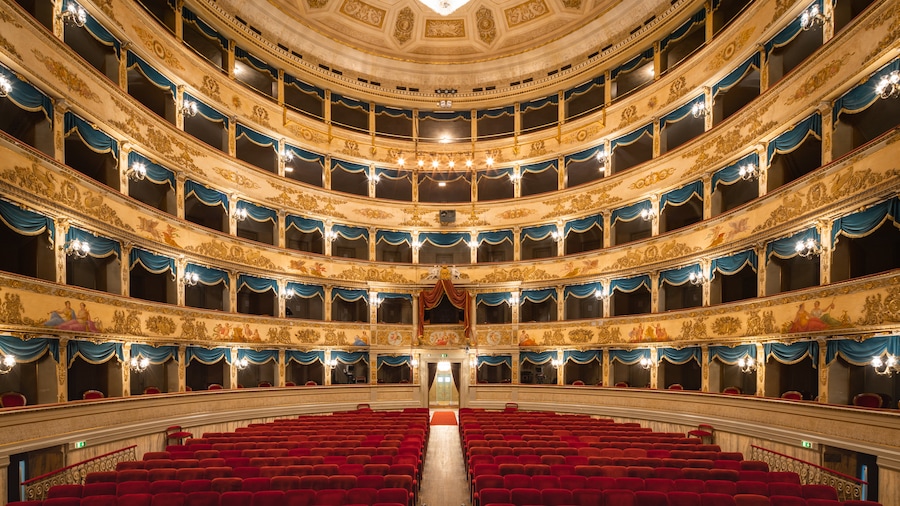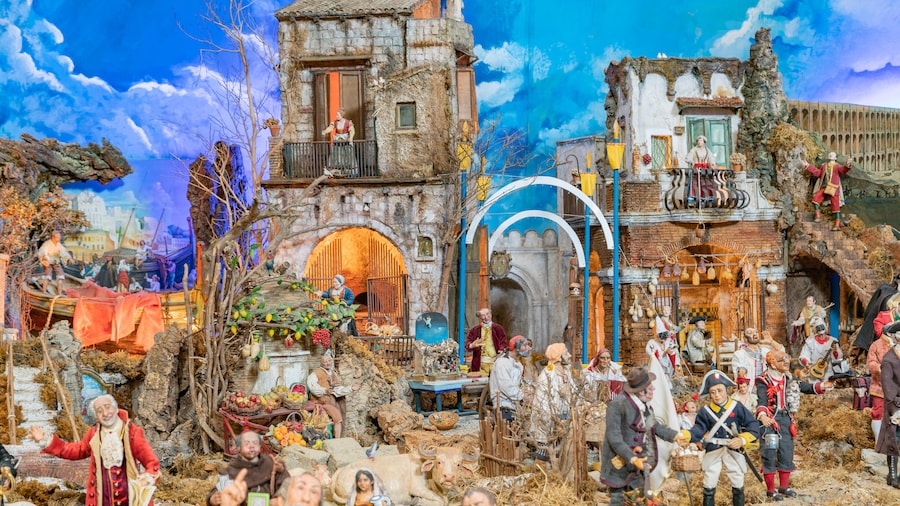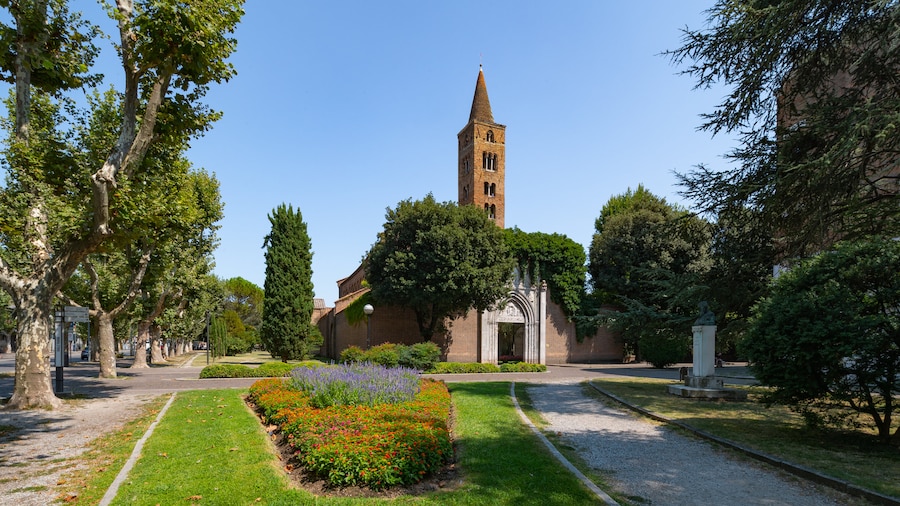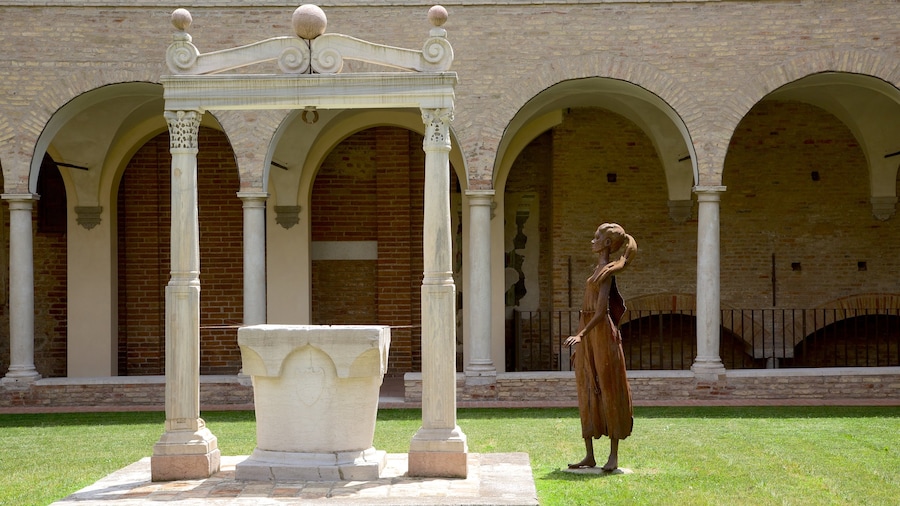Inspect the colourful domed mosaic of Christ to learn about the religious philosophies of the Arians and their king in this baptismal structure.
Constructed in the 5th century by King Theodoric the Great, the Arian Baptistery offers a glimpse into the past. It is famous for the shimmering mosaics of biblical scenes that decorate the interior walls. Capture photos of the octagonal building, with the adjacent Spirito Santo Church providing a backdrop.
From the outside, the structure appears to have two levels. Notice the four apses and arched windows that are carved into the redbrick building.
Enter the religious structure and study the wonderful mosaic filled with sacred symbolism that covers the underside of the dome. It portrays a young and naked Christ being baptized by St. John. Notice the dove symbolizing the Holy Spirit that hovers above Christ’s head. Encircling the dome are a throne, a crucifix and a mosaic of the Apostles.
Learn about King Theodoric and the religious conflict that engulfed the area during his days. The Orthodox Chalcedonian Christian philosophy holds that Christ is divine and equal to God, while the king’s Arian view suggests Christ is the inferior of the two. It is thought that Christ’s beardless and young appearance in this mosaic is an Arian symbol.
Aside from the mosaic, the formerly decorated walls are now bare. Take a break at one of the cafés beside the baptistery. Go on a tour of the neighboring church, which was rebuilt after being damaged in World War II.
Purchase a ticket and get a half-price deal if you’re an Italian or young European Union citizen. The site opens daily from morning until early evening.
Find the Arian Baptistery next to the Spirito Santo Church in the center of Ravenna. Get a bus to a stop on the road along the eastern side of the baptistery. Make sure to see neighboring landmarks, such as the House of Puppets Museum, the Piazza del Popolo and the Sant’Apollinare Nuovo Basilica.


